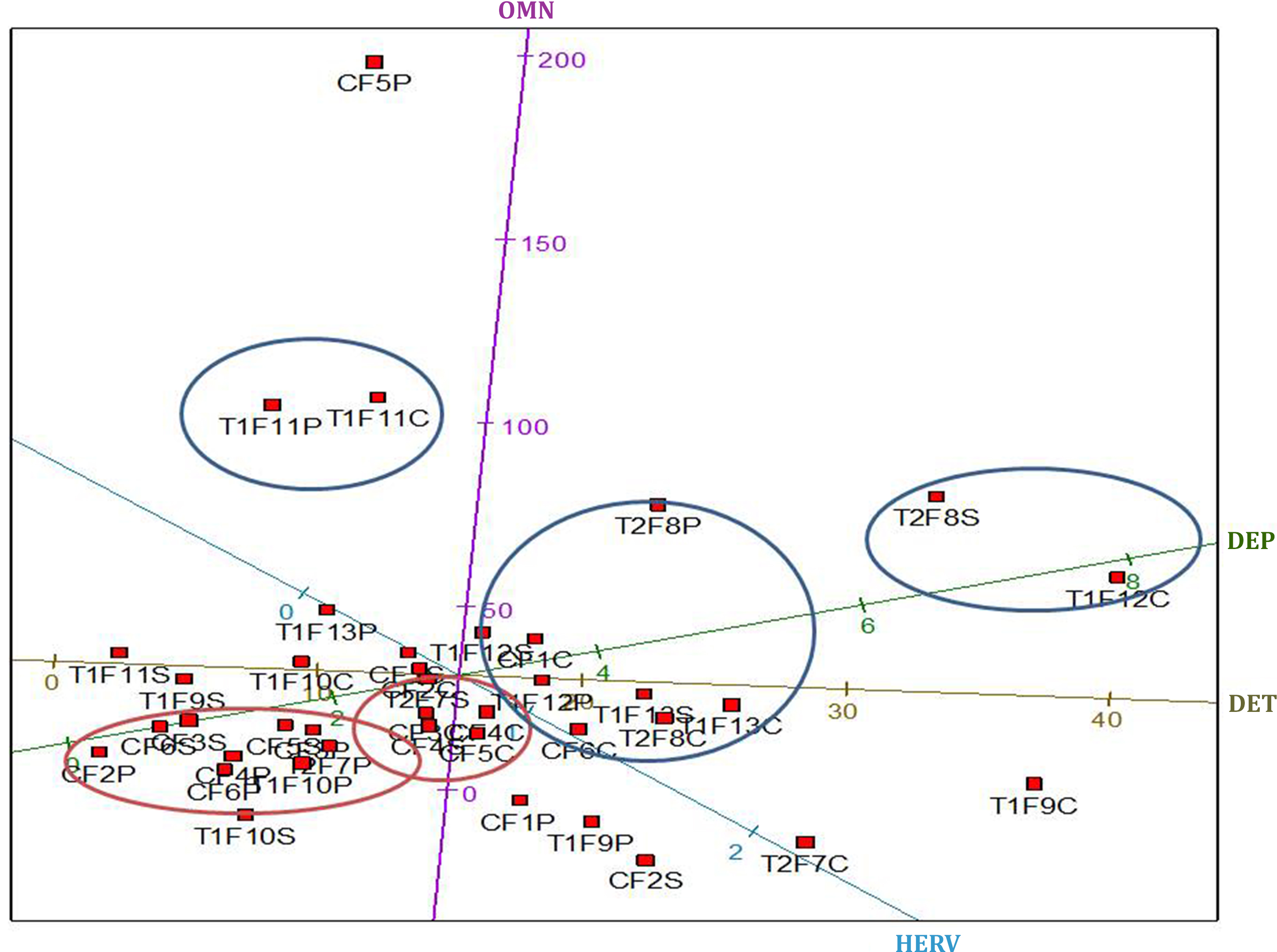The edaphic macrofauna in three components of the coffee plant arrangement associated with different management typologies, Antioquia, Colombia
Keywords:
Agroecology, agroecosystems, biota, conventional, transitionAbstract
The balance and sustainability of coffee agroecosystems in southwestern Antioquia depend on the interactions and synergisms that take place above and below the ground. Within these, the functional groups of edaphic macrofauna constitute bio-indicators of soil quality. The present research on coffee systems evaluates the edaphic macrofauna in three components of the plant arrangement, under different management typologies. The study was carried out in the San Gregorio, La Soledad, La Clara and Egypt townships of Santa Rita in the municipality of Andes, Antioquia. The assessment of the edaphic macrofauna was carried out by random stratified sampling under coffee canopy, under banana canopy and in the furrow, in three zones of the slope of each productive system. A general linear model, multivariate techniques of Manovas and Biplot were used as statistical methods. The greatest interaction of the macrofauna groups was presented in the order of the systems: Transition II (Use of organic inputs)>Transition I (Rationalization of synthetic inputs)>Conventional (Use of chemical inputs), and by plant arrangement components in the order Banana>Coffee>Furrow.

Downloads
Published
Issue
Section
License
Aquellos autores/as que tengan publicaciones con esta revista, aceptan las Políticas Editoriales.


